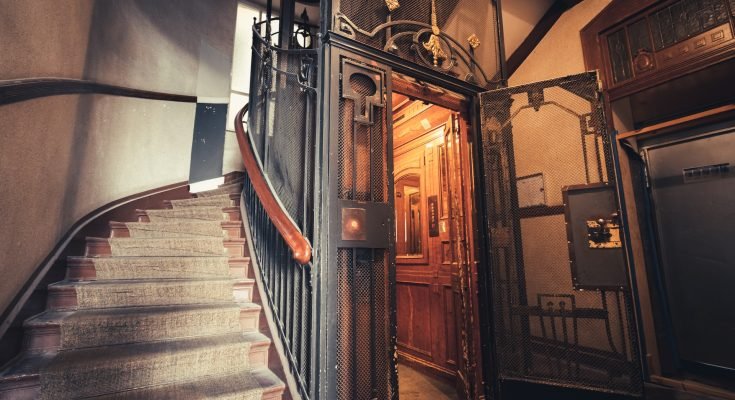Home elevators provide a convenient and safe way to move between floors in a home, and they come with many benefits. From added convenience and accessibility to improved home value and aesthetics, home elevators can provide a great way to make a home more comfortable and efficient. However, for the safety of all users, safety features should be installed in home elevators to ensure that the elevator is functioning properly and safely.
Lock Out Button
A lock-out button is an essential safety feature in a home elevator that prevents the carriage from operating unless the button is pressed. This button is typically located on the wall of the elevator, above the door and near the control panel. When pressed, the button locks the elevator in place, preventing the elevator from moving until the button is released.
This feature is important for preventing accidental movement of the elevator, or misuse of the elevator, which could lead to injury or damage. It is also essential for emergency situations, as the lock-out button provides a way for passengers to stop the elevator if it is malfunctioning or moving erratically. Furthermore, the lock-out button can be used to prevent unauthorized use of the elevator, ensuring that only authorized personnel use the elevator and that the elevator is not misused.
Emergency Stop Button
An emergency stop button is a safety feature installed in home elevators that allows passengers to stop the elevator in an emergency situation. This button is typically found near the control panel, and when pressed, it will immediately stop the elevator from moving. This is an essential safety feature that ensures the safety of anyone using the elevator and prevents any damage or injury that could be caused by a malfunctioning or erratic elevator.
The emergency stop button also provides a way to stop the elevator if it is being misused or if unauthorized personnel are attempting to use it. By having such a safety feature installed, homeowners can rest assured that their elevator is functioning properly and safely.
Fire Extinguisher
A fire extinguisher is an essential safety feature in home elevators, as it can help to prevent fires and the potential for serious injury or death. Elevators are confined spaces that can easily fill with smoke and fumes in the event of a fire, making it difficult for passengers to escape. An emergency fire extinguisher can be used to quickly put out any fires that occur in the elevator, minimizing the risk of injury or death. Furthermore, a fire extinguisher can provide peace of mind to passengers, as they know they are protected in the event of a fire.
In addition to providing protection from fires, a fire extinguisher can also be helpful in the event of a mechanical malfunction. In the event that an elevator stops functioning and catches fire, a fire extinguisher can be used to douse the flames and prevent the spread of fire within the elevator shaft. This can help to reduce the chances of further damage to the elevator and help to ensure that passengers are able to safely evacuate.
Safety Gate Installation
An entrance/exit gate is an important safety feature in a home elevator that prevents passengers from entering or exiting the elevator while it is in motion. This gate is typically made of metal and is installed between the elevator platform and the floor of the home. The gate must be opened manually by the operator before the elevator can be used. It is designed to prevent people from stepping into the elevator while it is in motion, an action that can cause serious injury or death.
When installing an entrance/exit gate, it is important to make sure the gate is installed correctly and securely. The gate should be strong enough to withstand the weight of passengers and the force of the elevator’s motion. In addition, the gate should be fitted with a sensor that will detect when someone is trying to pass through the gate and will alert the operator. This ensures that the operator is aware of any passengers entering or exiting the elevator, preventing the possibility of someone being injured or trapped in the elevator.
Backup Lights And Indicators
Backup lights and indicators are a necessary safety feature in home elevators. They provide an additional layer of security, in the event of a power outage or any other emergency situation. Backup lights and indicators ensure that the elevator can be seen and used safely, even if the power goes out. Additionally, they provide an additional level of illumination to help ensure that passengers can safely navigate the elevator when the lights are out.
Backup lights and indicators are typically battery-operated, and are designed to be activated in the event of a power outage. These lights will usually be located near the control panel, along the walls of the elevator, and on the door. They provide a source of light that is visible even in darkness and help to guide passengers to safety.
It is essential that homeowners take measures to ensure that their home elevators are safe and functional, with features such as fire extinguishers and backup lights and indicators.




